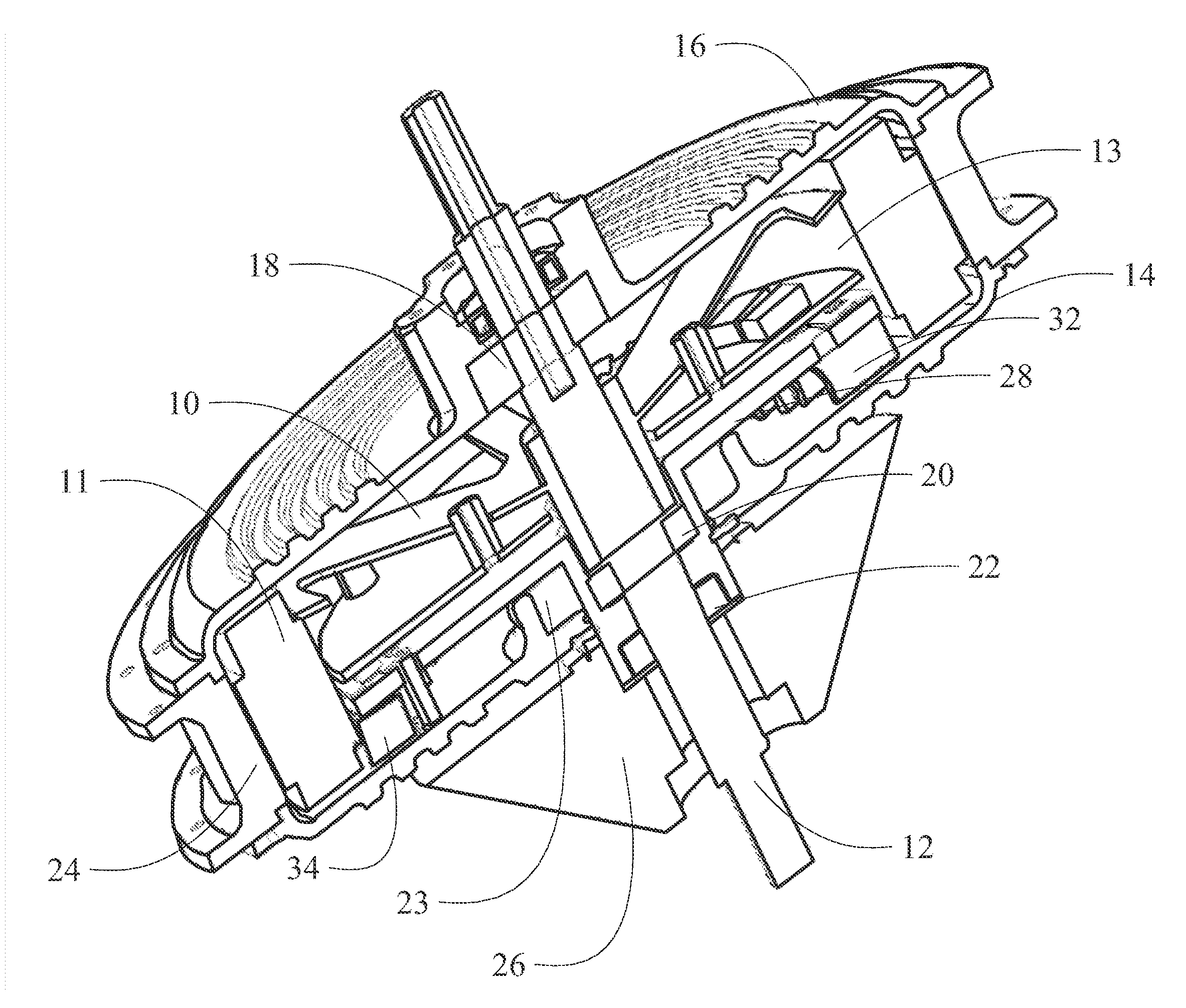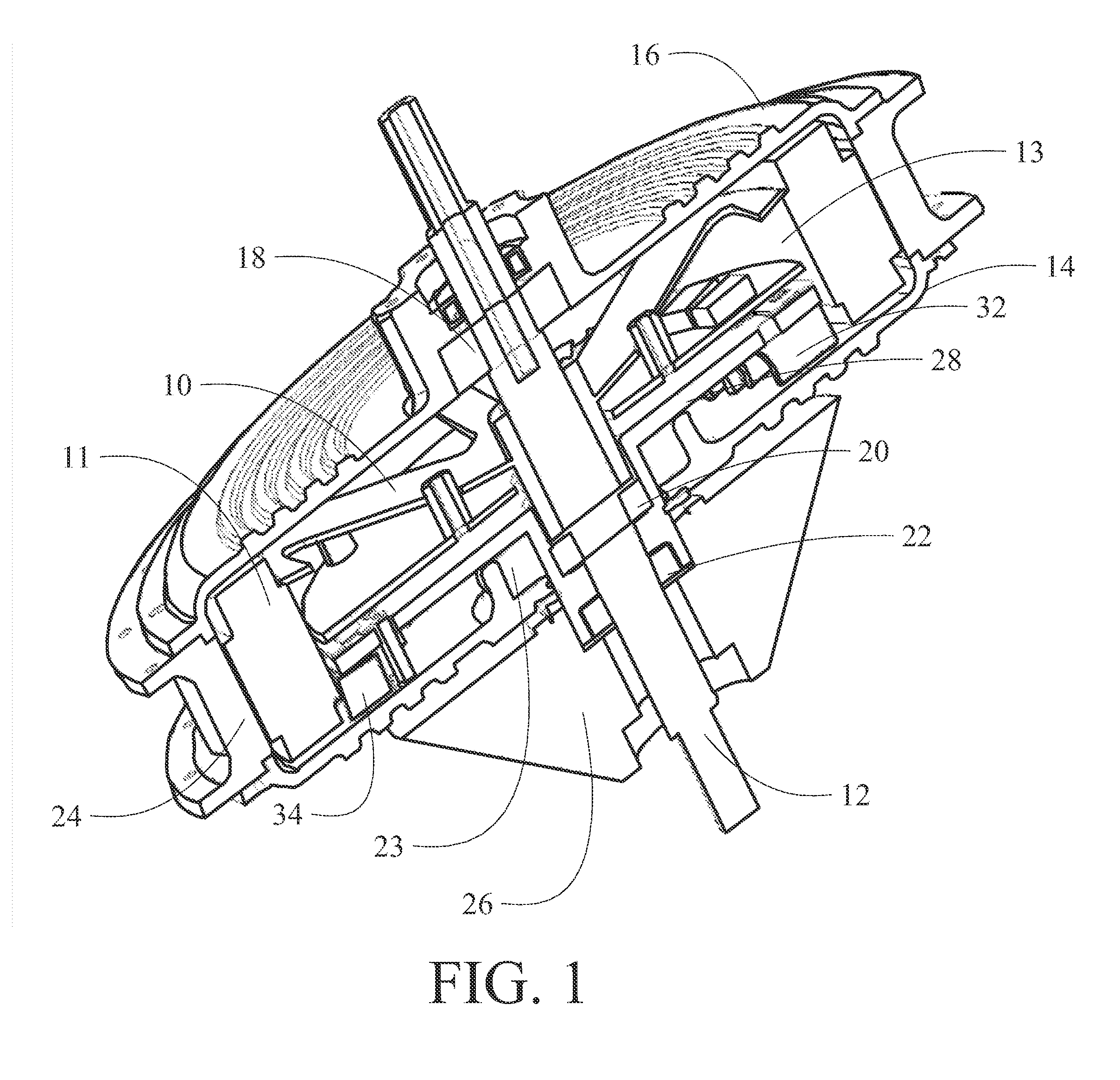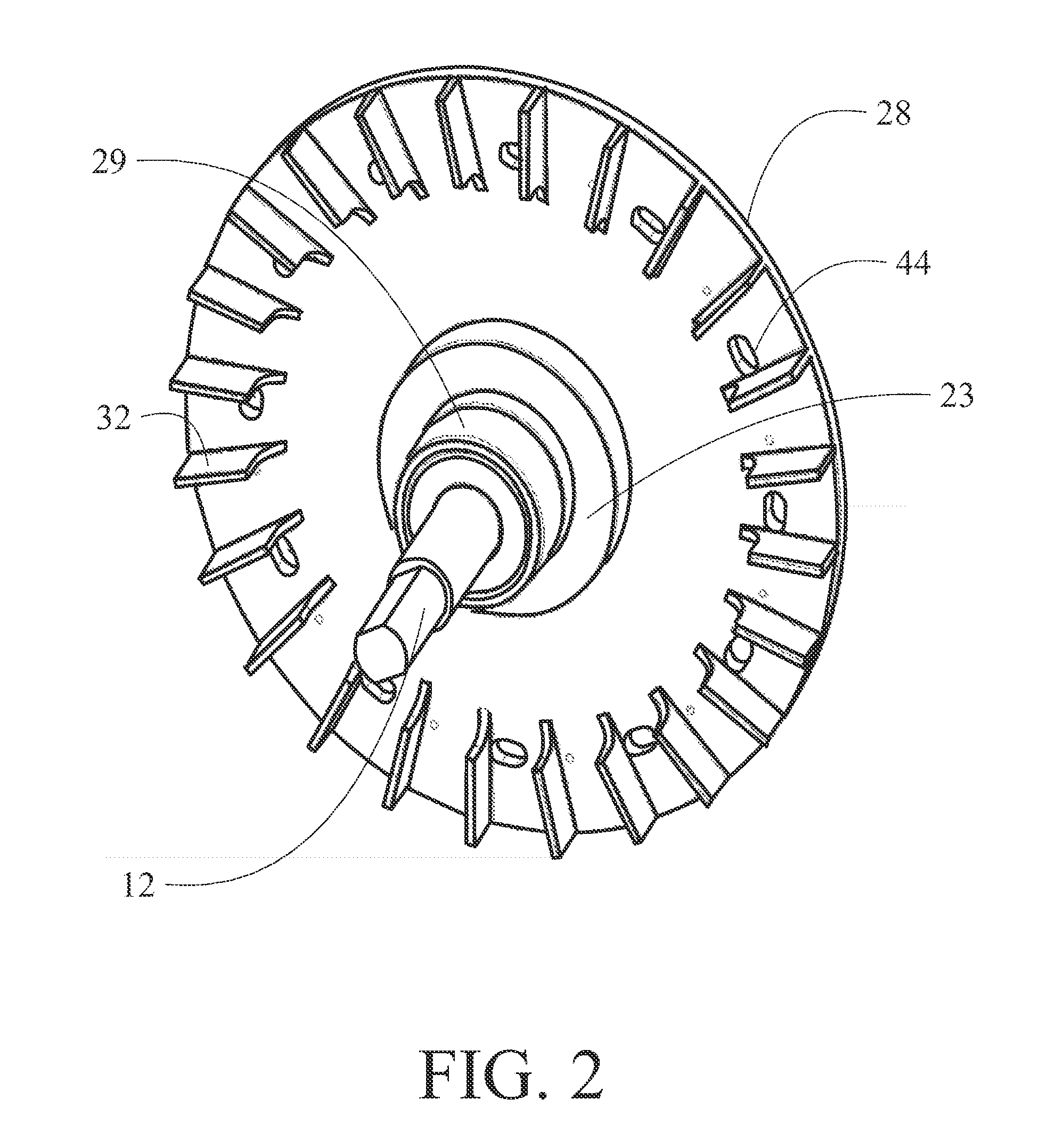Electronic bike integrated supplemental motor system
a motor system and electric bike technology, applied in the direction of electric devices, driver interactions, process and machine control, etc., can solve the problems of inability to efficiently recover surplus energy available from the user and/or the bicycle, difficulty in maintaining a steady pedal effort under varying load conditions, and prior art solutions that do not provide the capability to control a user's pedal effor
- Summary
- Abstract
- Description
- Claims
- Application Information
AI Technical Summary
Problems solved by technology
Method used
Image
Examples
Embodiment Construction
[0019]The embodiments described herein disclose an improved battery operated electric motor and control system for a bicycle, tricycle or any similar human powered vehicle. Such vehicles are all referred to herein with the term e-bike. The motor and motor controller reduce or increase the user's pedal effort in a controlled manner which includes the ability to independently set and maintain the effort level while simultaneously managing the operating speed of the e-bike.
[0020]A section view of an embodiment incorporating the present invention is shown in FIG. 1. The integrated brushless direct current motor employs a stationary stator yoke 10 carrying stator windings 11 mounted to a non-rotating axle 12 carried within the rear wheel support frame of a bicycle. The stator yoke is an offset stamping providing a cylindrical cavity 13 around the axle. A split motor case having a gear side casting 14 and an outer side casting 16 encompasses the stator yoke and is rotationally carried by ...
PUM
 Login to View More
Login to View More Abstract
Description
Claims
Application Information
 Login to View More
Login to View More - R&D
- Intellectual Property
- Life Sciences
- Materials
- Tech Scout
- Unparalleled Data Quality
- Higher Quality Content
- 60% Fewer Hallucinations
Browse by: Latest US Patents, China's latest patents, Technical Efficacy Thesaurus, Application Domain, Technology Topic, Popular Technical Reports.
© 2025 PatSnap. All rights reserved.Legal|Privacy policy|Modern Slavery Act Transparency Statement|Sitemap|About US| Contact US: help@patsnap.com



